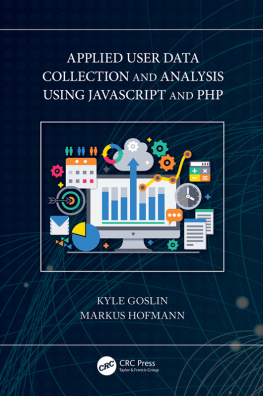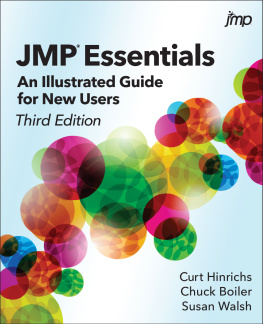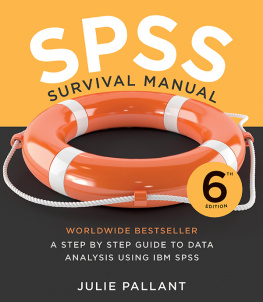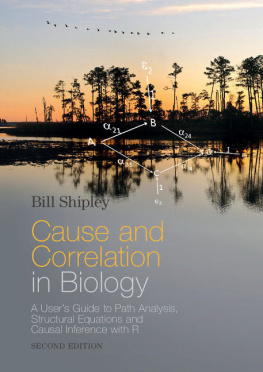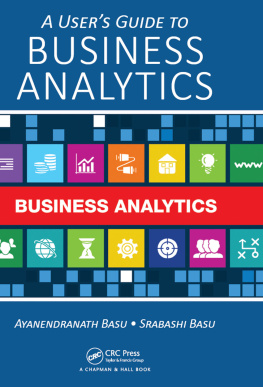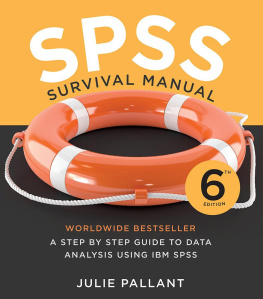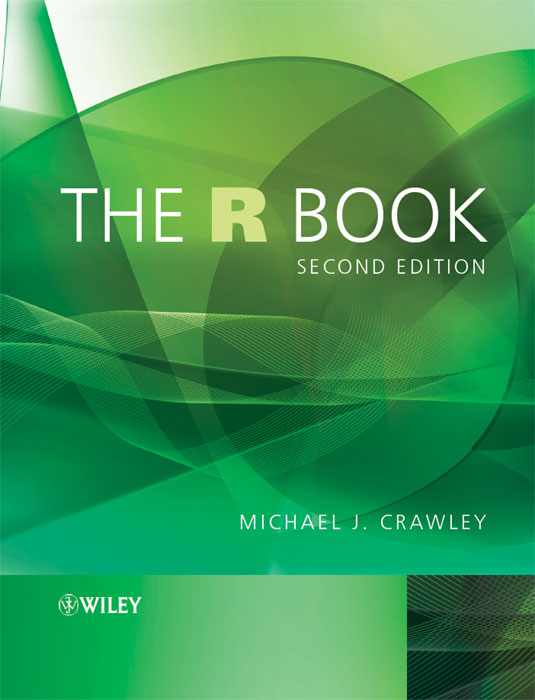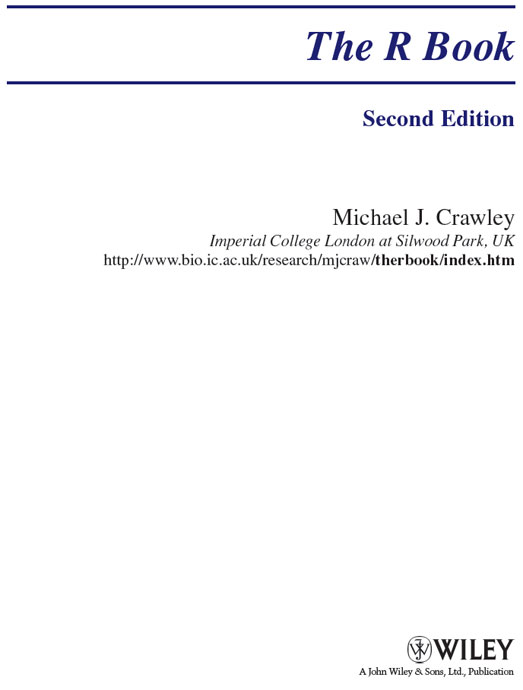This edition first published 2013
2013 John Wiley & Sons, Ltd
Registered office
John Wiley & Sons Ltd, The Atrium, Southern Gate, Chichester, West Sussex PO19 8SQ, United Kingdom
For details of our global editorial offices, for customer services and for information about how to apply for permission to reuse the copyright material in this book please see our website at www.wiley.com .
The right of the author to be identified as the author of this work has been asserted in accordance with the Copyright, Designs and Patents Act 1988.
All rights reserved. No part of this publication may be reproduced, stored in a retrieval system, or transmitted, in any form or by any means, electronic, mechanical, photocopying, recording or otherwise, except as permitted by the UK Copyright, Designs and Patents Act 1988, without the prior permission of the publisher.
Wiley also publishes its books in a variety of electronic formats. Some content that appears in print may not be available in electronic books.
Designations used by companies to distinguish their products are often claimed as trademarks. All brand names and product names used in this book are trade names, service marks, trademarks or registered trademarks of their respective owners. The publisher is not associated with any product or vendor mentioned in this book. This publication is designed to provide accurate and authoritative information in regard to the subject matter covered. It is sold on the understanding that the publisher is not engaged in rendering professional services. If professional advice or other expert assistance is required, the services of a competent professional should be sought.
Library of Congress Cataloging-in-Publication Data
Crawley, Michael J.
The R book / Michael J. Crawley. 2e.
pages cm
Includes bibliographical references and index.
ISBN 978-0-470-97392-9 (hardback)
1. R (Computer program language) 2. Mathematical statisticsData processing. I. Title.
QA276.45.R3C73 2013
519.502855133dc23
2012027339
A catalogue record for this book is available from the British Library.
ISBN: 978-0-470-97392-9
Preface
R is a high-level language and an environment for data analysis and graphics. The design of R was heavily influenced by two existing languages: Becker, Chambers and Wilks' S and Sussman's Scheme. The resulting language is very similar in appearance to S, but the underlying implementation and semantics are derived from Scheme. This book is intended as an introduction to the riches of the R environment, aimed at beginners and intermediate users in disciplines ranging from science to economics and from medicine to engineering. I hope that the book can be read as a text as well as dipped into as a reference manual. The early chapters assume absolutely no background in statistics or computing, but the later chapters assume that the material in the earlier chapters has been studied. The book covers data handling, graphics, mathematical functions, and a wide range of statistical techniques all the way from elementary classical tests, through regression and analysis of variance and generalized linear modelling, up to more specialized topics such as Bayesian analysis, spatial statistics, multivariate methods, tree models, mixed-effects models and time series analysis. The idea is to introduce users to the assumptions that lie behind the tests, fostering a critical approach to statistical modelling, but involving little or no statistical theory and assuming no background in mathematics or statistics.
Why should you switch to using R when you have mastered a perfectly adequate statistical package already? At one level, there is no point in switching. If you only carry out a very limited range of statistical tests, and you do not intend to do more (or different) in the future, then fine. The main reason for switching to R is to take advantage of its unrivalled coverage and the availability of new, cutting-edge applications in fields such as generalized mixed-effects modelling and generalized additive models. The next reason for learning R is that you want to be able to understand the literature. More and more people are reporting their results in the context of R, and it is important to know what they are talking about. Third, look around your discipline to see who else is using R: many of the top people will have switched to R already. A large proportion of the world's leading statisticians use R, and this should tell you something (many, indeed, contribute to R, as you can see below). Another reason for changing to R is the quality of back-up and support available. There is a superb network of dedicated R wizards out there on the web, eager to answer your questions. If you intend to invest sufficient effort to become good at statistical computing, then the structure of R and the ease with which you can write your own functions are major attractions. Last, and certainly not least, the product is free. This is some of the finest integrated software in the world, and yet it is yours for absolutely nothing.
Although much of the text will equally apply to S-PLUS, there are some substantial differences, so in order not to confuse things I concentrate on describing R. I have made no attempt to show where S-PLUS is different from R, but if you have to work in S-PLUS, then try it and see if it works.
Acknowledgements
S is an elegant, widely accepted, and enduring software system with outstanding conceptual integrity, thanks to the insight, taste, and effort of John Chambers. In 1998, the Association for Computing Machinery (ACM) presented him with its Software System Award, for the S system, which has forever altered the way people analyze, visualize, and manipulate data. R was inspired by the S environment that was developed by John Chambers, and which had substantial input from Douglas Bates, Rick Becker, Bill Cleveland, Trevor Hastie, Daryl Pregibon and Allan Wilks.
R was initially written by Ross Ihaka and Robert Gentleman at the Department of Statistics of the University of Auckland in New Zealand. Subsequently, a large group of individuals contributed to R by sending code and bug reports. John Chambers graciously contributed advice and encouragement in the early days of R, and later became a member of the core team. The current R is the result of a collaborative effort with contributions from all over the world.
Since mid-1997 there has been a core group with write access to the R source, currently consisting of Douglas Bates, John Chambers, Peter Dalgaard, Seth Falcon, Robert Gentleman, Kurt Hornik, Stefano Iacus, Ross Ihaka, Friedrich Leisch, Uwe Ligges, Thomas Lumley, Martin Maechler, Guido Masarotto (up to June 2003), Duncan Murdoch, Paul Murrell, Martyn Plummer, Brian Ripley, Deepayan Sarkar, Heiner Schwarte (up to October 1999), Duncan Temple Lang, Luke Tierney and Simon Urbanek.
R would not be what it is today without the invaluable help of the following people, who contributed by donating code, bug fixes and documentation: Valerio Aimale, Thomas Baier, Roger Bivand, Ben Bolker, David Brahm, Gran Brostrm, Patrick Burns, Vince Carey, Saikat DebRoy, Brian D'Urso, Lyndon Drake, Dirk Eddelbuettel, John Fox, Paul Gilbert, Torsten Hothorn, Robert King, Kjetil Kjernsmo, Philippe Lambert, Jan de Leeuw, Jim Lindsey, Patrick Lindsey, Catherine Loader, Gordon Maclean, John Maindonald, David Meyer, Jens Oehlschlgel, Steve Oncley, Richard O'Keefe, Hubert Palme, Jos C. Pinheiro, Anthony Rossini, Jonathan Rougier, Gnther Sawitzki, Bill Simpson, Gordon Smyth, Adrian Trapletti, Terry Therneau, Bill Venables, Gregory R. Warnes, Andreas Weingessel, Morten Welinder, Simon Wood, and Achim Zeileis.






